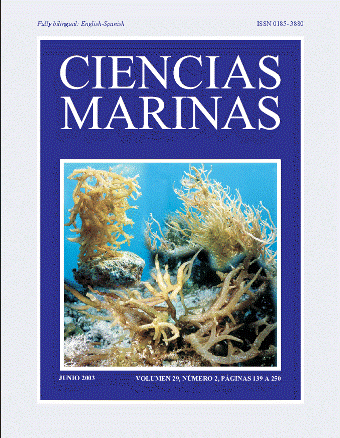Effect of marine contamination on the genetic population structure of the bivalve Crassostrea angulata
Main Article Content
Abstract
Seven enzyme loci were analyzed in three natural populations of Crassostrea angulata located on the southern Atlantic coast of the Iberian Peninsula. Two of the populations showed distinct levels of contamination by heavy metals, whereas the third was not contaminated and served as control. These seven loci were shown to be very variable in terms of the number of alleles, polymorphism and average heterozygosity. The Lap and Mdh1 loci presented null alleles. A significant positive correlation was found between the number of alleles and the concentration of iron that was fitted to a model of linear regression. However, this correlation was negative for the heterozygosity, and significant for cadmium and zinc. The Em, Lap, Mdh1 and Xdh loci showed a deficit of heterozygotes in all the populations. The values of heterozygotic deficit (D) were statistically significant between the contaminated populations and the control for Mdh1 and very close to a significant level for Em. In Pgm, a heterozygotic excess appeared in the control population and a deficit, which was correlated to the increased levels of metal concentration, occurred in the other two populations. The differences between the D values of the three populations were also significant in this locus. Positive, negative and significant relationships were obtained between the concentration of metals and some alleles of the Em, Lap and Pgm loci. Also, the homozygotic genotypes of the alleles with positive correlation values were selected in the contaminated areas, while the heterozygotes were more favoured in the control population, showing an adaptive behavior and corroborating the utility of some of these loci as biomarkers in studies of population dynamics in areas subjected to environmental contamination.
Downloads
Article Details
This is an open access article distributed under a Creative Commons Attribution 4.0 License, which allows you to share and adapt the work, as long as you give appropriate credit to the original author(s) and the source, provide a link to the Creative Commons license, and indicate if changes were made. Figures, tables and other elements in the article are included in the article’s CC BY 4.0 license, unless otherwise indicated. The journal title is protected by copyrights and not subject to this license. Full license deed can be viewed here.

